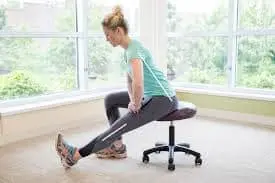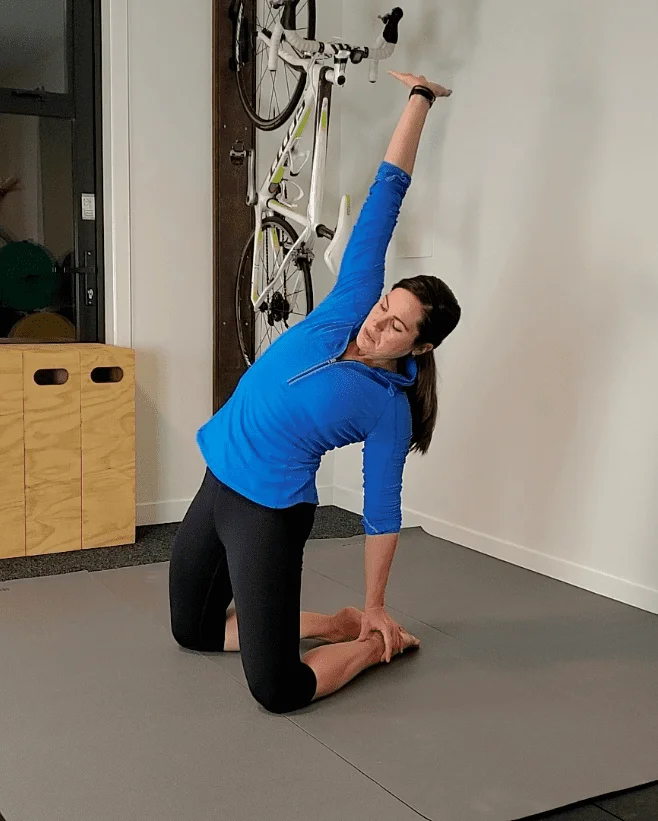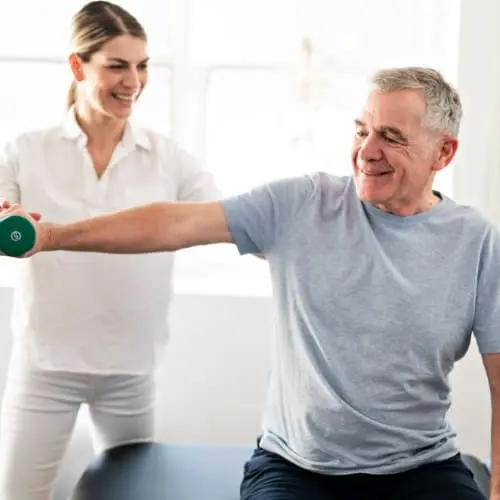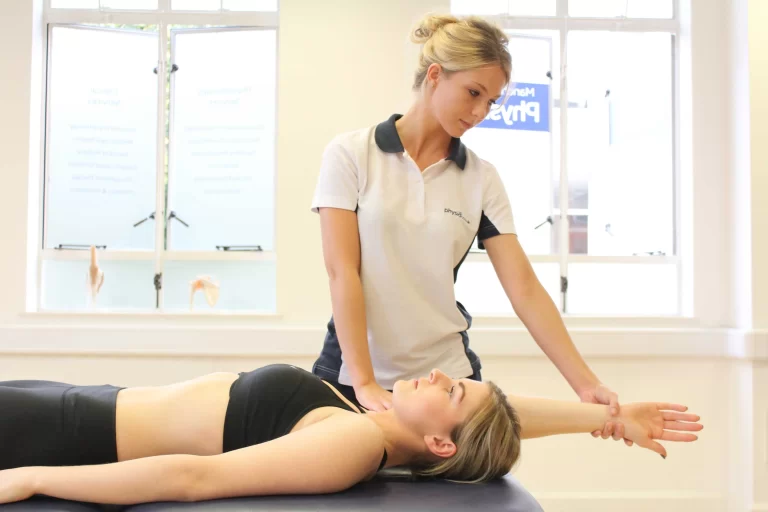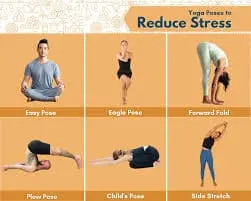25 Best Exercises For Hamstring Strain
Introduction:
Hamstring strains are a common injury, particularly among athletes and individuals who engage in activities requiring sudden bursts of movement. These injuries occur when the muscles at the back of the thigh are overstretched or torn, leading to pain, stiffness, and limited mobility. Proper rehabilitation is crucial to avoid recurrence and restore full function.
Incorporating targeted exercises helps strengthen the hamstring muscles, improve flexibility, and support the recovery process. A well-structured exercise regimen not only aids in healing but also prevents future injuries by enhancing muscle resilience and overall stability.
When they contract, they help to bend (flex) the knee and extend the hip (move the leg backward). A regular program that includes significant physical activity includes hamstring muscle routines. These exercises are typically performed to strengthen the hamstrings.
A hamstring strain is caused by an overload on one or more of these muscles. You might even start to tear muscles. The most common places for these types of tears are in the muscle fiber itself or where the muscle joins the tendon that runs along your lower leg, knee, and pelvis.
Sports injuries commonly seen in athletes are hamstring strains. The three various types of strains are denoted by grades 1, 2, and 3.
- Grade I: Little structural harm comes about, and the muscle recovers gradually.
The amount of ripped or fractured muscle fibers is rather minimal. This usually affects the muscle’s strength and endurance. Depending on the person, pain and sensitivity typically begin the day following the injury. The most common complaint from patients is stiffness in their rear legs. The patients can move their feet normally. A small amount of edema does not prevent the knee from bending normally.
- Grade II: A partial rupture has occurred.
The percentage of broken fibers is about 50%. The symptoms include edema, mild loss of function, and acute pain. Walking will be impacted for the patient. Applying specific pressure to the hamstring muscle or bending the knee against resistance are two techniques that simulate pain.
- Grade III: This suggests a full tear in the tissue and a prolonged healing period.
Including a complete muscle rupture to a rupture of more than half of the fibers. This injury may affect the tendon. It is really painful and swollen. The hamstring muscle is extremely weak and has lost its ability to operate.
Rehabilitation Exercises For Hamstring Strain help hasten healing and prevent more damage. Most rehabilitation methods involve a mix of strengthening and flexibility exercises. Exercises designed to strengthen your hamstrings are initially taught in a rehab program and can be performed at home without any specialist equipment.
Exercises For Hamstring Strain:
The exercises that are ideal for pulling the hamstrings are mentioned below.
Straight leg raise
- To begin, find a comfortable supine position on the floor or a table.
- Flex both knees now.
- Then slowly elevate your one leg.
- Hold this position for a few seconds.
- Then lower your leg.
- Then return to your neutral position.
- Then relax.
- Repeat this exercise five to ten times.
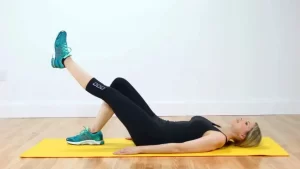
Seated-hamstring-stretch
- Maintain a straight posture when sitting on the ground.
- Put your heel down on the floor with your toes spread wide and pointing skyward while extending the leg you want to stretch.
- As you shift your weight forward, keep your back flat and lean forward at the hips.
- Continue to bend your trunk forward until you feel a stretch in the back of your leg.
- Hold this position for a few seconds.
- Then return to your neutral position.
- Then relax.
- Repeat this exercise five to ten times.
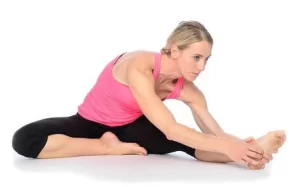
Hamstring Curls with Resistance Band
- Take a position in the middle of the looped band and wrap the other end around your other ankle.
- Involve your core and maintain a tall standing posture.
- Extend the covered leg outward while maintaining a straight knee.
- Gradually bend your ankle toward your glute.
- Hold this position for a few seconds.
- Then return to your neutral position.
- Then relax.
- Repeat this exercise five to ten times.
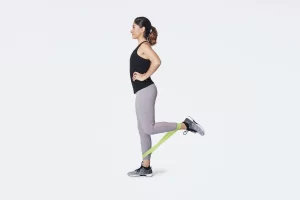
Leg swings
- To do hamstring swings, spread your feet hip-width apart.
- Swing one leg forth and backward to progressively increase the range of motion.
- Start with modest swings and progressively increase the intensity to avoid tension or losing your balance.
- Maintaining good balance and refraining from jerking or using excessive force are also important.
- Then return to your neutral position.
- Then relax.
- Repeat this exercise five to ten times.
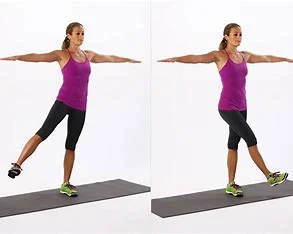
Bridges
- With your feet flat on the floor and your legs bent at a 90-degree angle, begin lying flat on your back.
- Try to align your knees with your toes, so that they point in the same direction.
- To lower yourself, lift your hips and apply pressure with your heels.
- Hold this position for a few seconds.
- Make sure your knees stay above your toes during the entire exercise.
- Keep them from going over the toes in front of you.
- Allow your hips to return to the floor calmly.
- Then return to your neutral position.
- Then relax.
- Repeat this exercise five to ten times.
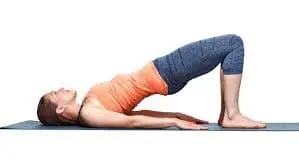
Single leg bridge
- Lay down on an exercise mat with your hands flat on the floor and your arms at your sides.
- Bend your knees while keeping your feet flat on the floor and a few inches away from your buttocks.
- Raise one foot and completely extend the leg so that it is at a 45-degree angle to the ground. This is where everything begins.
- Pull your stomach and buttocks to assist with the lift, then elevate your hips until your shoulders and knees are in a straight line.
- At the same time contract your core, as though attempting to pull your belly button back towards your spine.
- Hold this position for a few seconds.
- Gently and slowly drop the hips to the floor while maintaining the outstretched leg.
- Then return to your neutral position.
- Then relax.
- Repeat this exercise five to ten times.
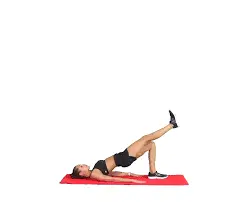
Seated-hamstring-curls
- A resistance band’s ends can be fastened to an exercise machine, stuffed item, or any other substantial object.
- Before the band starts please have a seat.
- Encircle the loop around one of your heels while maintaining a close foot placement.
- Bend your knee and pull your heel back, pausing when you can no longer pull it back.
- Hold this position for a few seconds.
- Then return to your neutral position.
- Then relax.
- Repeat this exercise five to ten times.
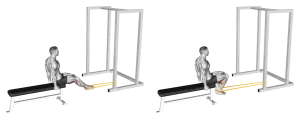
Leg-Press-on-the-Ball
- Settle down on a large exercise ball.
- Move your feet outside until your upper body is positioned over the ball.
- You’re going to be looking away from the ball.
- Keep your head down and your neck in its natural position.
- Your arms will be by your sides.
- Bend your knees as if you were going to squat.
- Hold this position for a few seconds.
- Then return to the starting posture by pushing through your heels, keeping your hamstrings firm.
- Then relax.
- Repeat this exercise five to ten times.

Hamstring stretch on wall
- With your healthy leg through the wall, you should lie on your back at the entrance.
- To straighten your injured leg, raise it against the wall.
- You should have a slight sensation of the rear leg being extended.
- Keep your back neutral.
- Have your knees straight.
- Maintain one heel on the ground and the other pressed up against a wall.
- Keep your toes pointed away.
- Hold this position for a few seconds.
- Then return to your neutral position.
- Then relax.
- Repeat this exercise five to ten times.
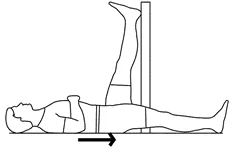
Standing kickbacks
- Place your hands one to two feet away from you, against a wall, counter, or box.
- Take your left foot off the ground and bend your knee as you move slightly forward.
- Ensure that your core is tight and your back is straight.
- As you extend your leg backward at an angle of 60 to 90 degrees, contract your glutes.
- Hold this position for a few seconds.
- Then return to your neutral position.
- Then relax.
- Repeat this exercise five to ten times.
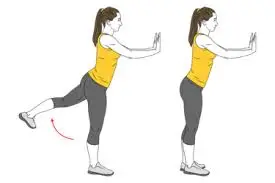
Prone leg raise
- Get on the ground and lie flat on your face.
- Tighten your core muscles progressively as your abdominal muscles are tensed.
- Breathing should be possible while doing this.
- Slowly raise one leg backward while keeping your knees straight and your abs tight.
- Keep your knee straight once your thigh has lifted off the ground.
- Hold this position for a few seconds.
- Gently return your straight leg to the ground after releasing it from the air.
- Then return to your neutral position.
- Then relax.
- Repeat this exercise five to ten times.
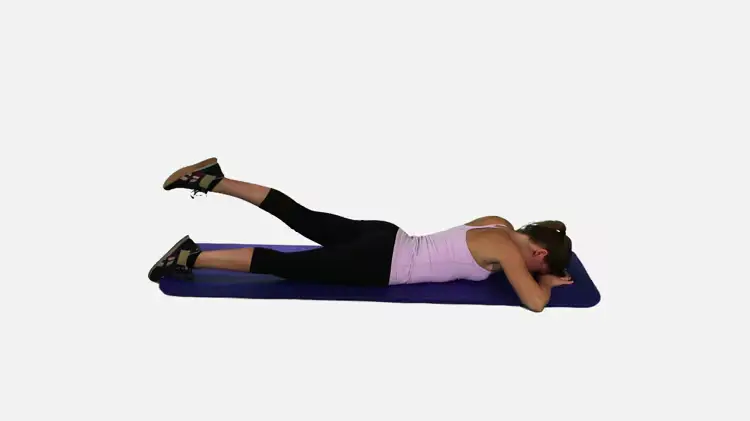
Running High Knees
- Take an upright position with your arms by your sides and your feet around hip-to-shoulder width apart.
- Use your core, lower your chest, and maintain an upright posture.
- Elevate your right knee such that it is in your chest and just above your waist.
- Use your left hand to move air at the same point.
- Lower your right leg and left hand rapidly.
- Continue with your left hand and leg as before.
- Then return to your neutral position.
- Then relax.
- Repeat this exercise five to ten times.
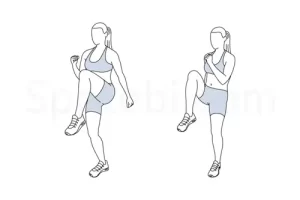
Single knee to chest
- Start by lying down on your back on a comfortable surface, such as a yoga mat, or bed.
- While holding this stretch, keep your head and shoulders in a relaxed position.
- Either bend your knee or maintain the leg opposite you straight.
- Using both hands behind it, gently bring your left knee toward your chest.
- Hold this position for a few seconds.
- Then let go of the leg.
- Then return to your neutral position.
- Then relax.
- Repeat this exercise five to ten times.
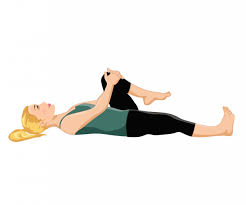
Hip-flexor-stretch-on-chair
- Your right foot should be placed on the chair in front of you.
- Maintain an upright posture while engaging your pelvic floor and core.
- Stretch your muscles by bending your right knee and gradually pushing your hips forward.
- Be cautious not to arch your back.
- Hold this position for a few seconds.
- Then return to your neutral position.
- Then relax.
- Repeat this exercise five to ten times.
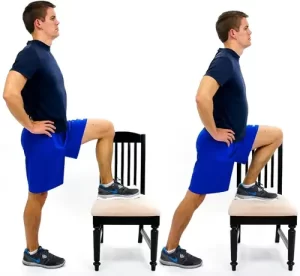
Squats
- Begin in a neutral standing position on the ground.
- Keep your body facing outward and provide strong foot pressure while you push your hips back, engage your abdominals, and shift your weight back to your heels.
- Lower yourself into a squat as soon as your heels begin to lift off the floor or as soon as your body begins to lean or flex forward.
- Hold this position for a few seconds.
- Your form ought to decide how deep you go.
- To get back to your starting posture, push through your heels with your chest out and your core tight.
- Tighten your glutes at the highest point.
- Then return to your neutral position.
- Then relax.
- Repeat this exercise five to ten times.
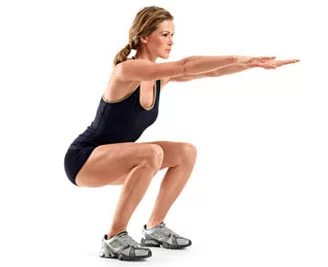
Prone hip extension on the stability ball
- Place the ball under your hips or lower abdomen.
- Your toes should barely just touch the ground when you hang your legs over the back of the ball.
- Press your hands into the ground in front of the ball with your arms extended straight.
- Compression in your glutes will help you raise your feet off the floor and bring them into line with your upper body.
- Maintain an active core while holding onto the ball.
- Hold this position for a few seconds.
- Refrain from extending your lower back and keep your kneeling position straight.
- Then return to your neutral position.
- Then relax.
- Repeat this exercise five to ten times.
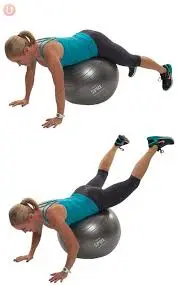
Half-kneeling hip flexor stretch
- Put your right leg at a 90-degree angle in front of you and kneel with your left knee on the floor.
- Maintain a straight back while placing your hands on your right knee.
- Lean forward onto your right hip and squeeze your left buttock muscles while maintaining your left knee pushed firmly to the floor.
- Hold this position for a few seconds.
- Gradually bring your extended leg back to its starting position.
- Then return to your neutral position.
- Then relax.
- Repeat this exercise five to ten times.
Leg extension
- Sit in a chair or at the edge of the bed, around mid-thigh.
- Try not to touch the ground with your legs.
- Your hands should be on the seat.
- Extend the affected leg to its fullest extent.
- Hold this position for a few seconds.
- Lower your leg.
- Then return to your neutral position.
- Then relax.
- Repeat this exercise five to ten times.
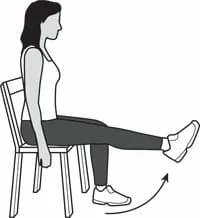
Single-leg deadlift
- Take a standing position on the ground to begin.
- Keeping your other leg straight behind you, lean forward with your hips to shift your weight onto one leg.
- As your body forms a “T” shape, elevate your extended leg and bend forward.
- During bearing the weight, your arms must be hanging straight down.
- Keep your leg slightly bent as you stand.
- Hold this position for a few seconds.
- Slowly bring your outstretched leg back to its starting position.
- Then return to your neutral position.
- Then relax.
- Repeat this exercise five to ten times.
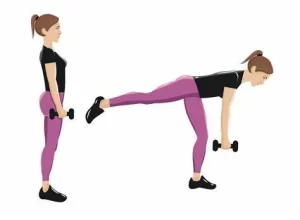
Standing hamstring stretch
- When standing, maintain a straight back and an equal spine.
- Bring the right leg forward in front of the body with the foot flexed, heel planted into the ground, and toe pointed upward.
- Extend the left knee slightly.
- Using your hands to stabilize your right leg, gradually bend forward.
- Hold this position for a few seconds.
- Then return to your neutral position.
- Then relax.
- Repeat this exercise five to ten times.
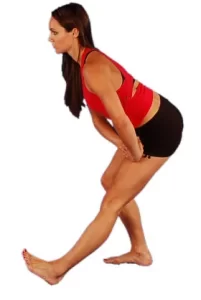
Standing hamstring curl
- As you stand, plant your feet firmly on the ground.
- If you need help staying balanced, rest your hands on your waist or a chair.
- Your left leg should now be bearing the majority of your weight.
- With the right knee bent slightly, move the heel toward the butt.
- Maintain a parallel thigh.
- Hold this position for a few seconds.
- Bring your foot down gradually.
- Then return to your neutral position.
- Then relax.
- Repeat this exercise five to ten times.
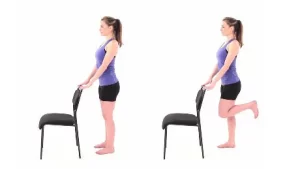
Lying hamstring stretch
- Lie on a mat and extend your legs so that you are laying on the ground.
- To straighten the leg, insert the band through the heel of the right foot and bend it.
- While holding the strap, use both hands.
- Continue to extend your left leg and place your foot flat on the ground.
- Your thigh and calf should come closer to the floor as a result.
- Gradually lengthen your right leg while maintaining a bent foot.
- With a slight bend in the knee, the right leg should be straight.
- The bottom of the foot should face upwards.
- Your hamstrings should get a little stretched as you slowly tighten the strap.
- Hold this position for a few seconds.
- Then return to your neutral position.
- Then relax.
- Repeat this exercise five to ten times.
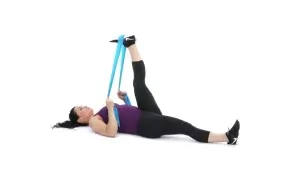
Lunge
- Starting from a standing stance, place your feet hip-width apart.
- Step forward more slowly than you would when walking, putting one leg in front of you and the other behind you.
- Throughout the entire process, your foot should remain flat on the ground.
- Bend your knees to a roughly 90-degree angle as you drop.
- Hold this position for a few seconds.
- Do not forget to keep your trunk upright and your core engaged.
- To return to the starting stance, push off strongly with your front leg after that.
- Then return to your neutral position.
- Then relax.
- Repeat this exercise five to ten times.
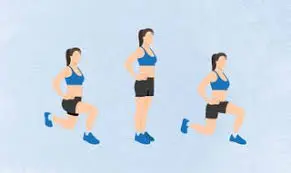
Prone knee bend
- Make sure you’re lying prone in an upright position on the bed or table.
- Now, flex your knee to a level that feels suitable for you.
- Hold this position for a few seconds.
- Then return to your neutral position.
- Then relax.
- Repeat this exercise five to ten times.
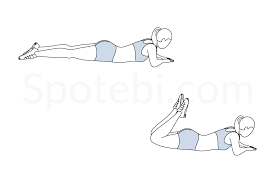
Bulgarian Split Squat
- Beginning with a step bench or table at knee height, place yourself about two feet in front of it.
- Put your right foot back on the stool by extending its top.
- Your right foot should be far enough in front of the bench so that you can lunge easily; move your feet about a little to find the ideal location.
- The distance between your feet should still be about shoulder-width.
- If placing your feet closer together helps, just make sure that your left knee does not cross your toes as you lower.
- Roll your shoulders back and lean your waist slightly forward while contracting your core.
- Next, begin bending the knee of your left leg by lowering it.
- During this lowering phase, take a breath and drop until your left thigh is almost parallel to the floor.
- To get back up to standing, push through your left foot and use your hamstrings and quadriceps for strength.
- Then relax.
- Repeat this exercise five to ten times.
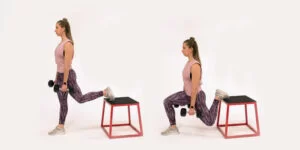
What precautions must be taken while exercising?
- Maintaining good posture while exercising is vital.
- Verify that the equipment you’re using fits you correctly.
- Do not engage in strenuous exercise.
- To guarantee that your body has enough time for rest between exercises.
- Extend, hold, and repeat the exercise correctly.
- When working exercise, wear loose clothing to allow your body to move freely.
- It’s fine if stretching seems difficult for the stiff muscles, but you shouldn’t ever experience severe or extreme pain.
- The protocol, which specifies the proper number of repetitions for each exercise as well as the warm-up and cool-down times, must be followed for each exercise.
- Take your time when you exercise. You are not required to move very quickly.
When do you stop exercising?
- Headache
- Fever
- If you were told by your doctor to stop exercising for a few days.
- Severe pain in the muscles.
- It is possible to spread infection.
- Exercise should be stopped if it hurts.
Time needed for recovery after hamstring strain:
Like all things recovery-related, the answer is different. Factors such as age, size, multiple medical conditions, compliance, exercise intensity, and degree of muscle strain may all affect the healing time. Results from muscle strains on gradual 1 often appear in a few days or weeks. A few weeks are the expected healing period for grade 2 muscle strains. Grade 3 muscle injuries require surgery, which delays the recovery process.
Summary:
The most prevalent condition affecting the hamstrings is muscular strains. Stretching and strengthening the muscle can help speed up its healing process. It is essential to follow a doctor’s rehabilitation plan and make follow-up sessions with physical therapists.
Exercise and stretching are crucial components of a good rehabilitation program for healing. We’ll go over hamstring strengthening and flexibility stretches because it’s important to avoid hamstring strains.
Exercises that lengthen and strengthen the body are essential. After the first acute period, very gentle static stretching activities can begin if there is no pain. After your injury heals, you can add dynamic stretching, which calls for movement, and eventually sports-specific exercises.
FAQ:
Which stretches work best for relieving strains in the hamstrings?
Knee to chest
Standing hamstring stretch
Hamstring wall stretch
Hip flexor stretch on chair
Half-kneeling hip flexor stretch
Lying hamstring stretch
Does physical therapy work well for hamstring strain pain?
A physical therapist may also advise you on the best therapy for hamstring strain injuries particular to your situation and when it could be safe for you to return to your regular activities. Though it may take days, weeks, or even months to recover from a hamstring sprain, visiting a physical therapist could hasten the healing process.
Can heat help with hamstring pain?
Hamstring strain recovery (4–7 days)
The heat should be applied for ten to fifteen minutes to increase the flexibility of the muscle fibers and the circulation of cells. After applying heat, the area can be gently massaged while the tissue is still soft and warm.
How frequently do people have hamstring strains?
Ankle strains, like those caused by a “pulled hamstring,” are common among sportsmen. They are more common among athletes who play fast-paced sports like basketball, soccer, and track & field.
When recovering from a hamstring strain, what typical mistakes can one avoid?
Avoid common mistakes during the recovery process from hamstring strains, such as sleeping too little, disregarding pain, missing workouts, performing incorrect exercises, following a recommended treatment plan, and trying to return to sports too soon.
Can an exercise regimen help a hamstring strain heal?
One common treatment for hamstring strain pain that helps prevent more damage and suffering is exercise. Stretching is one kind of exercise that supports the body’s muscles and helps them get stronger. Frequent exercise can lessen the intensity of the recurrent ache.
References:
- 2024a, January 28; Bariya, D. The Best 36 Exercises To Release Hamstring Strain. Mobile Clinic for Physiotherapy. The greatest hamstring muscle exercises are available at https://mobilephysiotherapyclinic.in.
- Physiotherapist N. R. S. (2023, June 1). Hamstring Exercises at SportsInjuryClinic.net. Sports Injury Clinic states that hamstring exercises can help with back and thigh pain. Internal citation: (Physiotherapist, 2023)
- Expert C. C. M. (n.d.). Hamstring Pull. The following link: https://my.clevelandclinic.org/health/diseases/17039-hamstring-injury Cleveland Physicians
- A hamstring strain. February 28, 2007. WebMD hamstring strain. Workouts at https://www.webmd.com/ Internal citation: (Strain, Hamstring, 2007)
- January 30, 2020 / Smith, M. Exercises for Rehabilitation from High Hamstring Injuries: AccessHealth Chiropractic. Exercises for Rehabilitation from High Hamstring Injuries: AccessHealth Chiropractic. https://www.accesshealthchiro.com/ offers hamstring injury rehab exercises. The paragraph cites Smith, 2020.
- Image 3, June 8, 2024; Rogers, P. Beginner’s Guide to Leg Curls: Form, Variations, and Common Errors… well-fitted. This is the proper way to perform the leg curl exercise: 3498304 at https://www.verywellfit.com
- Image 10, Exercises, regimens, and routines for STANDING GLUTE KICKBACK. (No date). Exercises: Standing Glute Kickback (https://www.workoutsprograms.com/)
- Image 11, Daisy. (1 June, 2021a). Elevated Knees | Detailed Exercise Manual. SPOTEBI. a website that provides high kneeling individuals with a workout plan.
- Image 13, On July 25, 2019, Jones, T. Stretching for the Hip Flexors | Tampa Bay Sports & Medical Massage. Massage Therapist in Tampa | Sports & Medical Massage Tampa Bay. Hip-flexor stretches at Tampa Bay Sports Massage & Massage are discussed in the blog
- Image 15, A Guide to Stability Ball Prone Hip Extension (May 20, 2015). https://in.pinterest.com/pin/177047829077845230/

